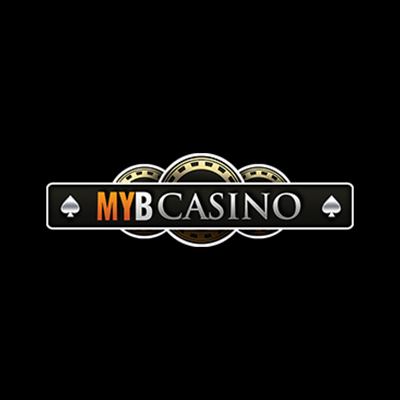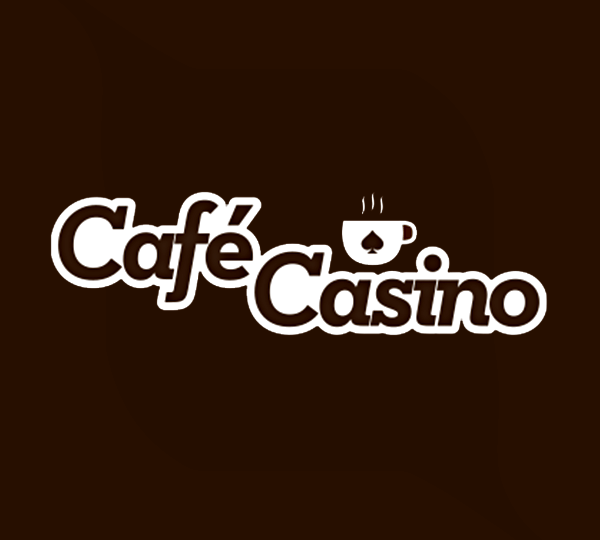In the United States, and the rest of North America as well as the United Kingdom, this card game is called baccarat. In Europe and other parts of the world, they call it baccara. Whether you are an advocate of the “T” or not, the card game has achieved a lot since it became public in the 15th century. This was when an uncertain number of Italian soldiers brought the game into contact with the French during the Italian War of 1494 to 1498, under King Charles VIII. However, other stories tie the origin of baccarat to the 19th century.
Just like most casino games, the origin is unclear but the focus is on how fun it is to play the game and, of course, how easy it is to win. Baccarat indeed thrives in both elements. While the game is similar to the considerably more “famous” blackjack, it is even easier to understand the rules and play the game. One similarity is the low house edge both games have to offer; baccarat offers between 1.01% and 1.23% while blackjack can be as low as 0.2% if you know your way around strategies -these are some of lowest you will find in the casino.
In land-based casinos, baccarat is often enjoyed by high-rollers. In fact, James Bond is seen playing a version of baccarat in novels and films like GoldenEye, Casino Royale, and Thunderball. However, the game is now open to people of varying wallets as online baccarat is becoming more popular every year. With all major gaming software developers offering at least one baccarat game, real money baccarat is now within easy reach at practically every online casino.
Top Rated US Casino Sites
| Casino | Bonus | Play | Review | Games | Deposit | Device | Rating | |
|---|---|---|---|---|---|---|---|---|
| 1 |  |
Up to USD5,000 Welcome Bonus | Visit Casino | Read Review | Slots, Table Games, Bingo, Poker 24/7 | Visa, Mastercard, Bitcoin, Neosurf | Mobile, Desktop | 90 |
| 2 |  |
Free (No deposit required) | Visit Casino | Read Review | Slots, Table Games, Mobile Compatible | Visa, Mastercard, Bitcoin, Neosurf | Mobile, Desktop | 100 |
| 3 |  |
280% Welcome Offer | Visit Casino | Read Review | Slots, Table Games, Mobile Compatible | Visa, Mastercard, Bitcoin, Neosurf | Mobile, Desktop | 80 |
| 7 |  |
200% up to 1,000 USD Welcome Bonus | Visit Casino | Read Review | Slots, Table Games, Poker 24/7 | Visa, Mastercard, Bitcoin | Mobile, Desktop | 100 |
| 5 |  |
200% up to 1,000 USD Welcome Bonus | Visit Casino | Read Review | Live Casino Games, Mobile Compatible | Visa, Mastercard, Bitcoin, Neosurf | Mobile, Desktop | 90 |
| 4 |  |
250% Deposit Match + 50 Free Spins | Visit Casino | Read Review | Live Dealer, Slots, Table Games | Visa, Mastercard, Bitcoin, Neosurf | Mobile, Desktop | 100 |
| 6 |  |
100% up to 1,000 USD First Deposit Bonus | Visit Casino | Read Review | Slots, Table Games, Mobile Compatible | Visa, Mastercard, Bitcoin, Neosurf | Mobile, Desktop | 80 |
| 8 |  |
0 Poker Bonus, 3,000 USD Casino Bonus, & 0 Sportsbook Bonus | Visit Casino | Read Review | Poker, Casino, Sportsbook | Visa, Mastercard, Bitcoin, Crypto | Mobile, Desktop | 90 |
Best Online Casinos to Play Real Money Baccarat
Our really interesting guide covers everything you need to understand about playing online baccarat games for real money including, the top-notch online baccarat casinos and how to play baccarat for the first occasion. We additionally explore the differences in playing live and real cash online baccarat games and the pros and disadvantages of risking your dollars at online baccarat platforms. You will love exploring these fascinating details in our guide.
Here’s our selection of highly-rated online casinos where you can enjoy online baccarat for actual cash. Our specialists experienced dozens of online baccarat games in order to determine the finest real money baccarat casinos of 2019. During their analysis, they found some surprising results.

Wild Casino
WildCasino.ag is an online casino brand that is owned and managed by the same team that operates popular sportsbooks BetOnline.ag and SportsBetting.ag. While this team has always run online sportsbooks that offer a full selection of casino gaming, this is their new, standalone brand that focuses on the casino player. As a matter of fact, …
WELCOME BONUS
Up to $5,000 Welcome Bonus
FEATURES
- Comprehensive Live Dealer Section
- Supports Five Cryptocurrencies
- 24/7 Customer Support
Accepts US, Canadian & UK Players

Bovada Review
Bovada burst onto the US scene in 2004 back when it was named Bodog and the founder was a famous billionaire named Calvin Ayre. Yet, back in 2016, the online casino split to form two separate sites, Bovada and Ignition. Originally, the plan was to make Ignition the poker site and Bovada the casino and
WELCOME BONUS
$500 Poker Bonus, $3,000 Casino Bonus, & $250 Sportsbook Bonus
FEATURES
- Online Poker, Casino & Sportsbooks in 1
- Mobile (iOS/Android) Compatible
- Great Cryptocurrency Site
- Low Minimum Deposit of $20
US Players Accepted
How we find the best online baccarat casinos
The best thing about the Internet is how vast and diverse your options are. No matter what you are looking for, there is always more than one service or product offering it. But, with the number of scams or disreputable names out there, this pro often turns into a con. This is why World Casino Index has put up a list of just three casinos you can trust to have a wonderful experience playing your favorite baccarat game, relishing the best odds, and cashing out without any shenanigans. To do this, we put six elements into consideration:
– Availability of games
– Speed of payments
– Reputation of the casino
– Security technology used
– Gaming software
– Customer support
Then, we considered the gameplay of each baccarat game (do note that most websites only offer one to three baccarat games), the rules of playing, and – most importantly – the payouts. With all these put together, we reviewed dozens of websites and eventually concluded on the three websites listed above.
Types of Baccarat Games Offered Online
Playing Baccarat Online vs. at Land-Based Casinos
The elements that distinguish offline baccarat from online baccarat are basically the same as those that create a difference between offline and online blackjack. Needless to say, the objective of baccarat is to have your total cards equalling nine or a number closest to nine. This simplicity is the main cause of its worldwide fame as cards like spade, heart, and clubs have the same value – unlike other card games. This rule applies to both offline and online baccarat games so you can enjoy its simplicity regardless of which version you opt for.
Convenience
Sorry offline baccarat games but your online counterparts are just more convenient. Without any bias whatsoever, we can all agree that online gambling is generally more convenient than going to a land-based casino. This way, you will find it easier to place your bets and quicker to watch the outcome unfold. Talk about being able to play your favourite baccarat game on your mobile, tablet, and desktop devices.
Speed
Strategies
The consensus is that baccarat is a game of pure luck and zero skill. Regardless, there are a few strategies used by players of varying mathematical prowess. Two popular strategies are the Fibonacci betting system and the 1-3-2-4 system.
In the former, you are to place each bet according to the Fibonacci sequence, i.e. 1, 1, 2, 3, 5, etc. The trick is to follow the sequence when you lose a round and go two numbers back when you win. For example, if you win your fifth round at five units, you are to bet two units in the next round. If you lose that fifth round, you are to bet eight units in the next round.
In the latter, you are to place your bets according to the numbers, i.e. first round at one unit, second round at three units, and so on. And in summary, these strategies are possible to use in both offline and online baccarat.
These strategies are called progressive betting systems, which include the likes of the Martingale, the Labouchere, the D’Alembert, and the Paroli betting systems.
In both online and offline baccarat, you can use these systems as long as you have memorised the units to bet on as you progress. But, strategies are easier to use in offline baccarat games than their online peers.
Gameplay
Table Limits
Multiple Hands
If you have ever been in a casino and wanted to play more than one hand, online gambling is the savior. There are tons of online casinos that allow you to bet on multiple hands at the same time. Thanks to this opportunity, you will lower your variance and up your chance of winning.
Variety
As stated earlier, baccarat does not have as many variations as its distant relative, blackjack, but it does try its best. The main problem with offline gambling variety is that land-based casinos always offer games that are popular in their location. For instance, a casino in Macau would definitely offer Chemin de Fer and Three-Card Baccarat but Punto Banco would be a big no. Likewise, American casinos offer Punto Banco but only a few offer Chemin de Fer.
But in the online aspect, you are open to many varieties. Despite the fact that most online casinos offer one or two baccarat games, there are several websites at your disposal. If you do not find your preferred variant on a website, you can easily switch to another website. Still, be mindful to only deal with trusted websites. Even so, there are some variants that can only be found online, e.g. Live Speed Baccarat.
Dealers
Rules and Payouts/Odds
For the sake of arguments, the rules and payouts/odds of both online and offline baccarat are fairly the same. Pertaining to the rules, baccarat games found in land-based and online casinos follow the same rule as long as they are of the same variation. So, the Punto Banco that you play in Las Vegas is the same you will find online. This idea agrees with payouts/odds as well, as they are the same regardless of the platform you opt for.
Promotions and Online Baccarat Bonuses
With land-based casinos, promotions are usually tied to loyalty programs and how active you are at spending on the casino’s services. As you know, casinos are often operated by large companies and these companies set up programs that put loyal customers in a special space. These promotions normally include free or discounted accommodations, dining, shopping, and entertainment; invitations to exclusive events; participation in special programs; and other non-cash promos.
On the other hand, online casinos offer percentage bonuses. Most casinos have deposit bonuses, in which you get a predefined percentage of the amount you deposited provided it is within the eligibility range. Deposit bonuses also spread through multiple deposits, i.e. your first, second, and third deposits. With the terms and conditions understood, you should keep note of the rollover requirement of each game.
Since baccarat games have some of the smallest house edges, the rollover requirement is often tremendous. Take roulette as an example, its house edge is very high so casinos often place a small rollover requirement and still cover their business. Baccarat is a bad business for them so they would require you to roll the bonus over and over before you would be able to transfer the bonus balance to your real balance.
For instance, games like roulette would have a rollover requirement of 10x while baccarat could be as high as 50x. Contribution percentage is another way to go about this. With this method, each casino game is given a different contribution percentage. Slot games are the best games here, as they can be an exact 100%; wagering $100 counts as $100. Baccarat could be a disappointing 2%, so wagering $100 would count as just $2. Therefore, baccarat would take far more time to clear your bonus than most other games.
In summary, offline casinos award non-cash rewards depending on how much you spend. Online casinos, however, offer cash rewards based on the amount you wager regardless if you win or lose, but activating them is quite demanding.
Gameplay
Pertaining to the gameplay, online baccarat wins by a handful. As explained earlier, online baccarat respects your speed and how you play your game. If you are slow to decide, it is no shame and online baccarat understands that. If you are fast, it is still a win for you. Also, you can configure the design of the game in some online variants – sometimes depending on the casino.
Related Guides
- How to Play Casino Baccarat
- Live Dealer Baccarat Games
- Online Casino Reviews
- Real Money Gambling Guide
Play for real at

WELCOME BONUS
Up to $5,000 Welcome Bonus
- US Players Accepted
How to Play Baccarat for Real Money
In real money baccarat, players have two main betting options to choose from, the Player hand and the Banker hand. Names aside, you can wager on the Player hand or the Banker hand as you see fit, and the house banks most games of baccarat nowadays instead of individual players doing the deed.
In baccarat, both hands start out by drawing two cards each at random from a standard 52-card deck. The goal of the game is to reach the total closest to 9, but unlike in its close cousin blackjack, baccarat hands can never go over to “bust.” Instead, any total that reaches double-digits simply removes the left-most digit to create a new one-digit total.
As for the cards’ value, the 2s through 9s all hold their numerical rank, while Aces are worth 1, and any 10 or face card is worth 0.
Using this system, the best possible two-card hand is any natural 9, followed by a natural 8. When either of these desirable totals shows up, the hand concludes right then and there and the hand closest to 9 is deemed the winner.
In instances when neither hand lands a natural, however, an intricate set of rules known as the baccarat “tableau” takes over to determine whether one, or both, hands will draw a third card. Thanks to the single-digit system, a starting hand like 8-9 would equal 7 (8 + 9 = 17; removing the left-most digit leaves 7). From there, should the tableau force the 7 total to take another card like a 9, the final total would be a 6 (7 + 9 = 16; removing the left-most digit leaves 6).
Of course, baccarat players have nothing to do with all these deals and draws. Once you place your bet on either the Player or Banker hand to prevail – or on the longshot Tie bet that pays out 9 to 1 if both hands wind up with matching totals – your job is done.
Baccarat is a pure game of chance, one based on guessing between two nearly* 50/50 options. Players can’t make decisions past their Player or Banker preferences, nor can they pull back or increase their wagers.
*Banker hands “act” last when drawing a third card, giving them a slight advantage over the Player hand. Because of this discrepancy, casinos charge a 5 percent commission on winning Banker hand payouts in most forms of baccarat.
All there’s left is to let the dealer do their thing while you anxiously sweat that pivotal third card deal.
And at the baccarat table, sweating the action is 90 percent of the fun – at least in the “Big Table” format.
Playing Real Money Online Baccarat vs. Live Baccarat
In a brick and mortar casino, you’ll notice two decidedly different settings where real money baccarat aficionados gather.
The first is known as Big Table baccarat, and you’ll see these games played in the high-limit rooms guarded by velvet ropes and a security guard. The game’s moniker is well-deserved, as Big Table baccarat is played around an elongated table resembling the one you play craps on. And just like craps, a dozen or more players can ring the Big Table, while three dealers stand by to supervise the action.
Big Table baccarat is typically played for high-stakes by high-rollers, the millionaire businesspeople and “whales” who don’t mind paying for a bit of privilege. Following the example set by Bond, a Big Table baccarat game follows the old chemin de fer and punto banco gameplay by allowing individual players to handle the multiple-deck shoe.
This shoe is passed around from player to player, and whoever holds it acts as the dealer, distributing cards to the Player and Banker hands. The dealer is appointed as the “banker,” but unlike in chemin de fer, this is an honorary title so you won’t be held liable to pay out winning wagers or absorb losses.
Because the Big Table baccarat games are literally too rich for most gamblers’ blood, modern casinos devised a workaround known as “Mini Baccarat.”
At the Mini Baccarat table, gameplay resembles the typical house-banked table games most recreational gamblers know and love. That is to say, you’ll sit with up to five other players, while a single dealer takes care of handling the shoe, delivering cards, and distributing payouts. Mini Baccarat is also played for more reasonable stakes using the standard table game minimum limit of $5 per hand.
When you play Big Table baccarat, you’ll likely notice players taking their sweet time to check that crucial third card. They’ll slowly squeeze the card upwards to reveal the side “pips,” or suit symbols like club, diamond, heart, and spade. The arrangement of these pips provides the first clue as to the card’s value, but still gives players something to sweat based on the “side value.”
Picture the 4 and 5 of diamonds in your head for a moment…
Both cards have two pips on either side, but the 5 has one more in the center. The same goes for the 8, 9, and 10, which all have four pips to a side. When you see a “four-sider,” for example, you’ll know instantly that it’s either an 8, 9, or 10, but you’ll have to squeeze it even further to reveal the center.
Squeezing the cards is a huge draw for live Big Table baccarat players, as it provides a prolonged sense of anticipation and sweat. And because players take their squeezing quite seriously, it’s not uncommon to see dozens of decks used, abused, and tossed out during a single session of Big Table play.
Mini-Baccarat, and its commission-free offshoot “EZ Baccarat,” largely eschew the squeezing ritual, replacing it with a more efficient process by which the dealer reveals the card quickly before announcing each hand’s final total.
Naturally, all of these little flourishes that have made live baccarat one of the most popular casino table games on the planet are eliminated at the online tables.
You won’t have a dealer on hand to run the game – unless you’re playing Live Dealer baccarat that is, which you’ll learn more about down below – nor fellow players to converse with. Instead, playing baccarat online is a more solitary experience, which tends to remove much of the game’s natural charm.
On the other hand, folks who prefer a more brisk pace of play tend to appreciate online baccarat’s streamlined approach. Rather than wasting a minute or two watching some stranger get their squeeze on, you simply place your bet, click the “Deal” button, and let the cards fall where they may.
The whole process doesn’t take more than 10 seconds, so online baccarat has a reputation as one of the fastest, and thus more volatile, online table games on the menu.
Pros & Cons of Playing Baccarat Online for Money
Depending on your personal preference for fast or slow play, real money online baccarat can either be exhilarating or exhausting.
This is a pure game of chance, after all, and with an average pace of six hands per minute, you’ll be navigating the maze of variance over and over again in short order.
That variance can definitely be reduced though, thanks to one of online baccarat’s greatest virtues – $1 minimum bet limits. Even at the Mini and EZ Baccarat tables in a land-based casino, you’ll be expected to bet at least $5 to back a hand.
Online casinos, however, use the bankroll friendly $1 minimum for the most part, so budget-minded players can mitigate their risk to the tune of 80 percent.
Another great reason to play online baccarat is the ability to “practice” without paying a penny. Obviously, there’s not much to practice in terms of strategic thinking, hence the scare quotes above. But if you’ve never experienced baccarat before and want to get your feet wet, without parting ways with a piece of your precious bankroll, pulling up the free-to-play Practice Mode found on all reputable online casinos is your best bet.
Finally, while land-based casinos largely specialize in the Big Table, Mini, and EZ formats, playing baccarat online offers access to fun-filled variants like 7 Up Baccarat, Lucky Draw Baccarat, and Baccarat Gold.
Best Online Baccarat Odds
Because there’s just not too much an online casino can change about its real money baccarat offerings, players should look for standard rules and payouts when searching for the best games.
That means even money on winning Player bets, even money minus 5 percent commission on winning Banker bets, and 9 to 1 on winning Tie bets.
You might see some operators out there using a reduced 8 to 1 payout on the Tie bet, which creates a ridiculous house edge of 14.36 percent. Find the preferred 9 to 1 payout on Ties, however, and that house edge rate plummets to 4.84 percent.
Other characteristics that make for a great online baccarat game are cool sound effects and card animations, an intuitive user interface, clickable chip graphics, and even the fabled squeeze function.
Live Dealer Online Baccarat
Speaking of the squeeze, players who just can’t quit the slowly revealed sweat should look into Live Dealer versions of real money online baccarat.
For anybody unfamiliar with Live Dealer casino games, this online innovation uses a film studio to capture footage of human dealers working with physical cards in a recreation of a live casino – all streamed straight to your screen in real time. You’ll still be playing from the comfort of your couch, but in a Live Dealer baccarat game, you can chat with a friendly dealer, watch the cards dealt from a shoe, and most importantly, savor the squeeze.
Baccarat Live Squeeze by Evolution Gaming is probably the most well-known Live Dealer offerings, and for good reason. Using high-definition cameras capable of zooming, panning, and taking your view up close and personal, Baccarat Live Squeeze brings puts the all-important third card in the spotlight.
The dealer will slowly bend the last card so you can see the pips on one side, letting you sweat it out until they finally flip it over with a flourish.
Other versions of Live Dealer baccarat for money provide a squeeze feature based on clicking and holding your mouse. That means you can control the squeeze as you see fit, checking the top pips first, and then the sides, until you’ve narrowed down the possibilities.
Types of Online Baccarat Bonuses
Scoring online casino bonuses as a real money baccarat player is a classic “glass half full” sort of deal.
First of all, new players joining an online casino for the first time can claim sweet Welcome Bonuses that match your initial deposit by 100-500 percent. That means a basic $100 deposit can become $200-$600 depending on the Welcome Bonus match rate.
Regulars can also take advantage of the Reload Bonus to pump up their subsequent deposits. When reload your account with another deposit, the Reload Bonus often provides a 50 percent match, or more depending on the site.
Finally, once you’ve put in a decent volume of play, check your account notifications for No Deposit Bonus offers. These gifts are based purely on previous play, so as you earn Player Points, you can redeem them for free cash sent straight to your online bankroll.
Of course, casinos – online or otherwise – aren’t in the business of handing over free funds. To prevent bonus hunters from simply signing up, claiming the funds, and withdrawing them straight away, online casinos generally require you to reach certain playthrough / rollover requirements.
Say your online casino of choice requires a 25x playthrough / rollover requirement. That number is just a multiple based on your total deposit + bonus funds. Thus, a $400 starting balance including deposit and bonus funds would require $10,000 in total wagers ($400 x 25 = $10,000) before the bonus becomes available to cash out.
That’s the glass half full side of the equation…
Unfortunately for baccarat fans, the game’s fast pace of play and low house edge rates (1.06 percent on Banker; 1.24 percent on Player) make it particularly well-suited for meeting playthrough / rollover benchmarks. As a countermeasure of sorts, most major online casinos use variable “wagering contribution” rates depending on your game of choice.
High house edge games like the slots contribute 100 percent of every dollar wagered towards the playthrough / rollover race. But baccarat bets tend to use a much lower wagering contribution, generally in the 5-10 percent range, because of the game’s low house edge and speedy pace.
With that in mind, the best way to clear online baccarat bonuses is to take a whirl on the slots, or be prepared to put in a few lengthy sessions on the Banker vs. Player battlefield.
Real Money Baccarat FAQ
“I often see a baccarat game titled ‘Punto Banco’ in my favorite online casino, so what’s the difference between that and regular baccarat?”
There’s no difference at all, “Punto Banco” is simply another name for the American style house-banked form of baccarat.
“Do I need to worry about whether my online baccarat game uses a six- or eight-deck shoe?”
Not really, as this slight difference doesn’t do much to impact the game in any meaningful way. The house edge on Tie bets does increase slightly when you shift from eight decks (14.36 percent) to six decks (14.44 percent), but that’s a statistically negligible change.
“What’s the deal with this side bet labeled ‘Pair’ that I’ve seen some online casinos offer?”
This optional side bet pays 10 to 1 whenever the first two cards of the hand you’re betting on form any pair. Like the Tie bet, Pair bets are a longshot that carry a house edge of 10.36 percent (eight decks) or 11.25 percent (six decks).
History of Baccarat
Back in 1962, the dashing super-spy James Bond was introduced on the silver screen in “Dr. No.”
But before he battled enemies with bullets and his Bentley Mark IV, “007” was shown coolly flipping over natural 9s in a high-stakes game of baccarat. Well, Bond and his opponent turned paramour Sylvia Trench were actually playing chemin de fer, the French version of baccarat in which players take a turn acting as the bank.
Even when Trench made a nice looking 8 in their final showdown, Bond simply turned over his two cards to reveal yet another neuf, or a winning 9 total.
For an entire generation of moviegoers, “Dr. No” was their first taste of both Bond… James Bond, and the deceptively beautiful casino game known as baccarat.
That might’ve been the first instance showing baccarat on film, but as you’ll learn later in this page, gamblers have enjoyed this ultimate game of chance for several centuries and counting. And unlike other card games that have evolved to take on entirely new dimensions over time, baccarat has remained largely intact from its original form over all those years.
Even during the digital age, which has allowed online casinos to tinker with side bets, pay tables, and other gameplay features, real money online baccarat is essentially a carbon copy of the live game.
The Origin of Baccarat
Like most modern gambling games, real money baccarat originated in the Old Country when an Italian man by the name of Felix Falguiere devised a simple count-based card contest between two hands.
Falguire, who lived during the 15th century, dubbed his creation “baccara” – which is Italian for zero. Naturally, this first version of baccarat used 0 as the point value for 10s and face cards. Eventually, the game migrated to nearby France, where it was known as “chemin de fer.”
By 1847, French author Charles Van-Tenac devoted several pages within “Album des Jeux” to a mathematical examination of baccarat probability.
Baccarat was brought to American shores in the late 19th century, but it lagged behind blackjack in terms of popularity.
When the first legal casinos were built in Nevada back in 1931, baccarat wasn’t even offered, and it took until 1958 for the Sands to spread the first tables in Sin City.
Today, however, real money baccarat consistently ranks as the runner-up (behind slots) when it comes to generating casino “win” revenue.
Updated: 28.05.2025
